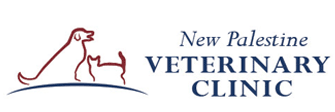Losing Some Fluff for the New Year
It is a new year and many of us have resolutions on the brain, not only for us, but for our pets as well. Is your pet carrying around a few extra pounds? They are not alone if so. In facc, over half of the pets in the United States are considered to be overweight.
Overweight pets are at increased risk for many diseases including arthritis, cancer, cardiovascular disease, and diabetes. They are also prone to shortened lifespans. If your pet is overweight we are happy to help you with a New Year's Resolution to fix that problem.
Give us a call to schedule a weight consultation appointment where we can offer some personalized advice. In the meantime, though, here are some of our best tips and tricks!
- Know what you are looking for!
You need to know what extra weight looks like on a pet in order to do something about it. If you cannot feel your pet’s ribs easily, your dog or cat likely needs to lose weight. You should be able to see a waistline from above and a tummy tuck when viewed from the side. Knowing your pet's body condition score is a great place to start.
- Measure out your pet’s food
A cup of dog food can contain a lot of calories. There can also be a lot of variation between brands and even varities of the same food. Use the chart on the back of the bag or can as a starting point to determine what you should be feeding. Remember to feed for your pet’s ideal weight versus current weight. If your pet has more than a few pounds to lose it is helpful to make a few smaller goals rather than one big one. Remember to use a measuring cup when feeding as well. You may think you know what 1 cup of kibble looks like, but chances are you are not being very accurate if you are eyeballing it.
- Cut the treats
Treats are often the source of a large amount of extra calories for pets. Treats and table food should never make up more than 10% of your pet’s daily diet. It is important to think about your pet's daily calorie needs, too. For instance a ten pound dog only needs about 300 kilocalories per day. Twelve Snausage treats gets you there pretty quickly, and just one small Busy Bone Dental Chew treat contains 309 kilocalories! Replace treats with smaller portions or choose lower calorie options such as green beans, baby carrots, or Cheerios.
- Get moving!
Just like for people, it's all about calories in and calories out. Make it a point to get your pet active for 15 minutes or more every day. Play a game of fetch, get out the laser pointer or some bubbles, or take them for a walk.
- Check in often
Weigh your pet at home or at the our office on a monthly basis. It is hard to notice subtle changes when you see them every day, so frequent weigh ins are important.
Our team is your partner in acheiving a healthy weight for your pet, and we think it's a great goal for the New Year. Wishing you and yours a happy, healthy, and fur-filled 2022.
